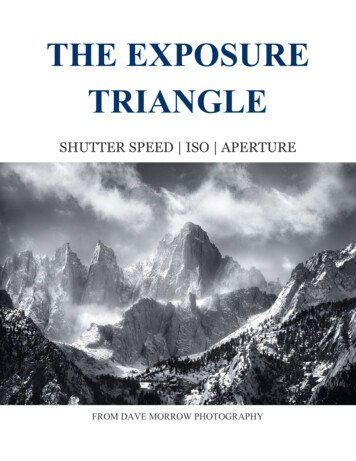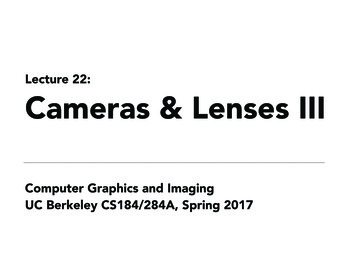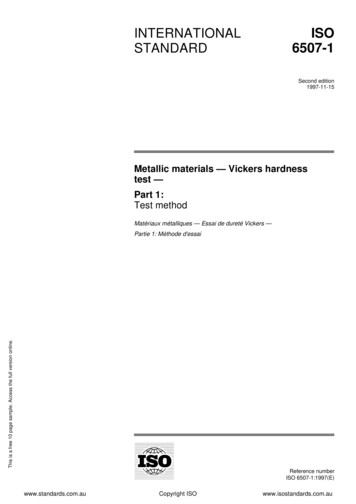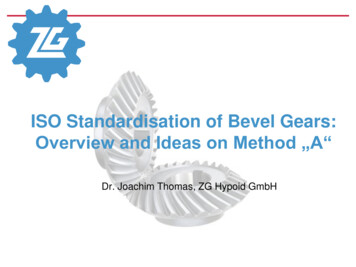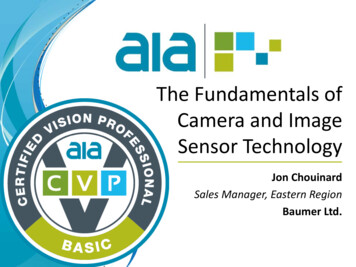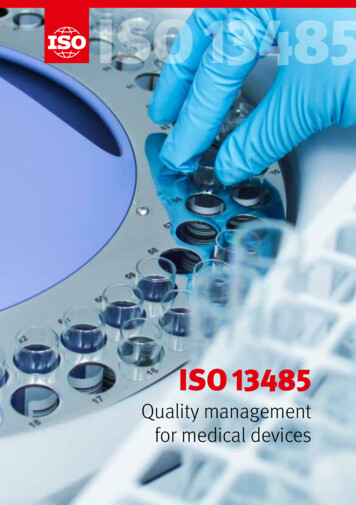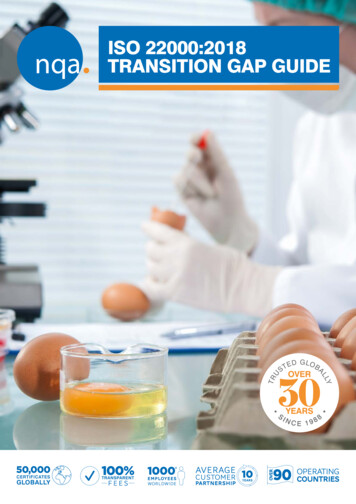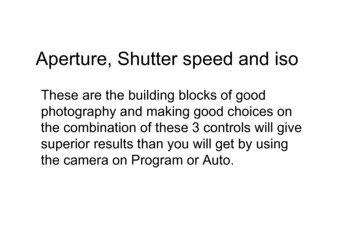
Transcription
Aperture, Shutter speed and isoThese are the building blocks of goodphotography and making good choices onthe combination of these 3 controls will givesuperior results than you will get by usingthe camera on Program or Auto.
Shutter speed Shutter speed refers to the amount of time the shutterremains open to capture the image, so to freeze an imagein motion it would not be uncommon to use a speed of1/1000th of a second or faster (some cameras go as fastas 1/8000th sec!), Alternately some images made at nightwith a tripod can be several hours long. If handholding try not to use a speed below 1/60thsec.Longer lenses need faster speeds to obtain a sharpimage, i.e. 200mm lens use 1/250th.
Fast shutter speed ie 1/2000th
Aperture Aperture or F Stop controls the amount of light coming in through the lensby opening or closing a diaphragm in the lens.The F stop you choose also has a direct influence on what is know as“Depth of Field”, this is the distance an image remains sharp from front toback, a small F stop i.e. a higher number say F22 will give greater depth offield (more sharpness) this is useful when trying to show all the detail ofobjects that have some depth, the greater the number the more closed thediaphragm is.A more open F stop i.e. F2.8 lets in more light but gives a shallower depthof field, this is useful when light levels are low or if you are wanting to throwareas of a photo out of focus, this can help direct peoples attention to acertain part of the photo and distract from the background by throwing it outof focus. Think of it like a tap, the more open the diaphragm the morelight can get through.
Shallow depth of field ie F2.8
ISO or Gain/Film speed Refers to the sensitivity of the film or chip to light, thehigher the number the more sensitive, the down side tothis is that the faster (higher) the iso the more “Noise” or inthe case of film “Grain” there will be in the image. Higher ISO is good when handholding the camera in lowlight or when fast shutter speeds are needed (sports). A lower ISO is best when photographing using a tripod orwhen quality is an issue.
What is White Balance? White balance (WB) is the process of removingunrealistic color casts, so that objects whichappear white in person are rendered white in yourphoto. Proper camera white balance has to takeinto account the "color temperature" of a lightsource, which refers to the relative warmth orcoolness of white light. Our eyes are very good atjudging what is white under different light sources,however digital cameras often have great difficultywith auto white balance (AWB).
White Balance 2 An incorrect WB can create unsightly blue, orange, oreven green color casts, which are unrealistic andparticularly damaging to portraits. Performing WB intraditional film photography requires attaching a differentcast-removing filter for each lighting condition, whereaswith digital this is no longer required. Understandingdigital white balance can help you avoid color castscreated by your camera's AWB, thereby improving yourphotos under a wider range of lighting conditions.
Example of Tungsten settingnotice the clean whites and how the tungsten setting has created a neutral colour balance
Histograms Understanding image histograms is probably thesingle most important concept to become familiarwith when working with pictures from a digitalcamera. A histogram can tell you whether or notyour image has been properly exposed, whetherthe lighting is harsh or flat, and what adjustmentswill work best. It will not only improve your skillson the computer, but as a photographer as well.
Histograms 2 Each pixel in an image has a color which hasbeen produced by some combination of theprimary colors red, green, and blue (RGB). Eachof these colors can have a brightness valueranging from 0 to 255 for a digital image with a bitdepth of 8-bits. A RGB histogram results whenthe computer scans through each of these RGBbrightness values and counts how many are ateach level from 0 through 255.
Histograms 3 The region where most of the brightness valuesare present is called the "tonal range." Tonalrange can vary drastically from image to image,so developing an intuition for how numbers mapto actual brightness values is often critical—bothbefore and after the photo has been taken. There is no one "ideal histogram" which allimages should try to mimic; histograms shouldmerely be representative of the tonal range in thescene and what the photographer wishes toconvey.
Overexposure
Underexposure
Good exposure
Exposure A good rule of thumb is that you will need tomanually adjust the exposure whenever you wantthe average brightness in your image to appearbrighter or darker than the midtones. Remember a camera on Auto will average thebrightness of what it “see’s”, if what the cameraaverages is very dark or very bright you will get awrong exposure.
Camera set to auto, photographs of very dark, mid grey and white pieces of card,notice the different exposures it has chosen even though the light levels have remained constant.
Camera on manual, accurate exposures of all three cards.
photography and making good choices on the combination of these 3 controls will give superior results than you will get by using the camera on Program or Auto. Shutter speed Shutter speed refers to the amount of time the shutter

